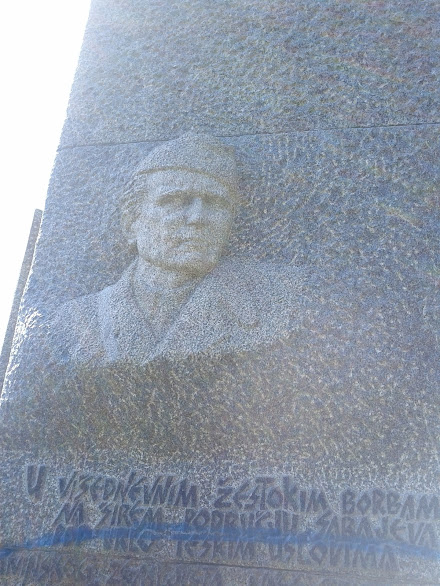During the Austria-Hungarian rule a large number of fortified buildings, barracks around Sarajevo, and elsewhere in Bosnia and Herzegovina. In the late XIX century Austro-Hungary, on the slopes of Trebević, on the southern part of town, in an area on Austro-Hungary maps marked as VRATCA, which by its name evokes a small door which were used as entrance to the city, builds a fort
The works were completed in 1898, and it was built as “blokhauz”, stone fortification, such as those being built around communications and transport facilities. In the first phase of construction, these buildings were built of massive stone. In the second pahse of construction, after 1903, these buildings are built of concrete and reinforced concrete.
During the World War II, aside of suffering in Sarajevo prisons, at Vraca and other execution sites in the area of Sarajevo (Velešići, Bentbaša, Kozija Ćuprija, Hreša and others), mass arrests and deportations of Sarajevo citizens to Nazi concentration camps across the Europe, were carried out. Thus in the period from May to December 1942 from Sarajevo, without trials to Nazi camps were deported more than 1300 people.
“It is believed that during the war, through Sarajevo camps passed around 103,000 persons, where 24,000 were killed.”
Form Sarajevo city and its surroundings participation of Yugslavian Army in war took around 16,000 soldiers, out of that number, 2,039 fighters, of which 26 national heroes were killed. Names of 9091 victims of fascist terros were located on the walls of the atrium of the fortress. If that number was added up with victims of Nazi-fascist bombings on the city during the 1941, the result would be close to 12,000 casualties – nearly every seveth inhabitant of Sarajevo city.
During this period, the facility of Vraca fortress was converted into a formal execution and gallows, where the citizens of Sarajevo were murdered, either in individual of mass executions.
At Vraca, from the mid-1941 and during the entire four years of war, ongoing executions were carried out, such ass executions, which got more intense as War was going on. People were killed and buried at Vraca, as well as majority of prisoners who were killed of died in police torture in Sarajevo.
After the World War II, the fortress at Vraca was abandoned facility, and since the Vraca, scaffold and gallows in the city of Sarajevo, has become synonymus with resistance and struggle of citizens against fascism, at this site was built memorial park, and castle was given to museum purposes Monumental struction was opened on 25th of November 1981. Construction was managed by the Board for Memorial Park construction, appointed by the Assembly of Sarajevo.
Chairman of the building was Rato Dugonjić.
Complex of Memorial Park – Vraca, because of its exceptional strategic position from where enemy had an excellent visual advantage, it served as spot from which city of Sarajevo was hit with heavy cannon and sniper weaponry. Memorial Park Vraca was one in series of positions , which formed the ring around the besieged city, which was armed with heaviest weapons, used to demolish the city.
Whole complex during the recent Sarajevo Siege was devastated, altogether with castle, individual memorials, parks, plateaus, and stairs, so today, eighteen years after Memorial Park – Vraca is still waiting for reconstruction.
Vraca Memorial Park Lost Place
